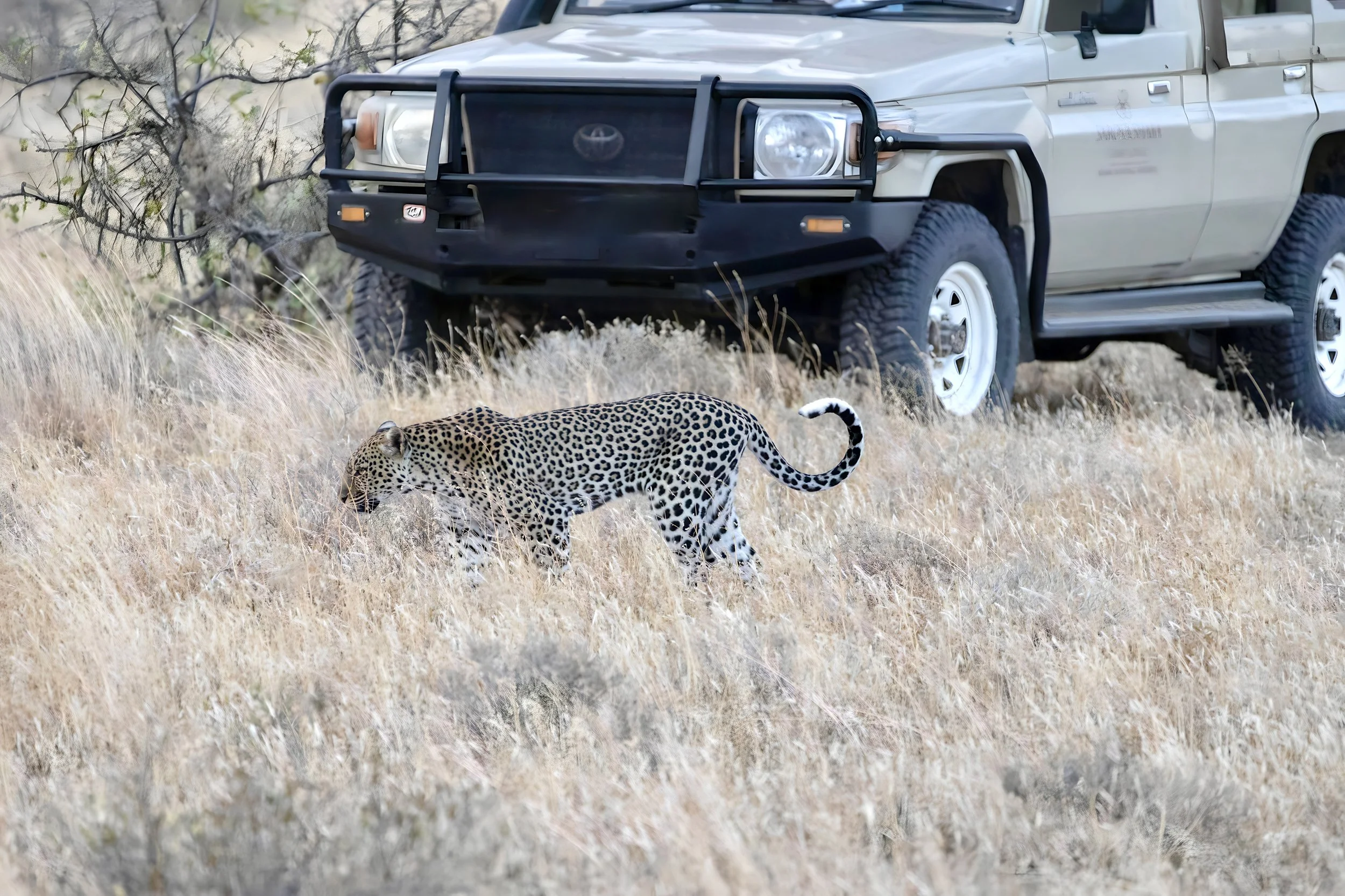The Female Leopard, Kenya
One of my favorite moments during the Africa trip This female Leopard was anxiously walking around. Seemed she was trying to follow the scent of another Leopard or prey nearby. Very graceful and elegant, did not mind our presence or the fact we were following her around, pretty closely within 10-15 feet, in a getaway Jeep
Leopards are highly adaptable and can survive in various habitats, including forests, grasslands, deserts, and mountains. They have a wide distribution across Africa and Asia, although their populations have become fragmented due to habitat loss and human encroachment. The main threats to leopards include deforestation, habitat conversion for agriculture, poaching for their skins and body parts, and conflict with humans.
In terms of physical characteristics, leopards are known for their distinctive coat pattern consisting of rosettes or spots on a pale golden background. This pattern provides excellent camouflage in their natural habitats, allowing them to blend into the surroundings and stalk their prey unnoticed. The leopard's muscular build and agility make it a formidable predator. It has a keen sense of sight and hearing, and it is capable of climbing trees with ease, often dragging its kill up into the branches to protect it from other predators.
Leopards are primarily carnivorous, and their diet consists mainly of ungulates such as deer, antelopes, and wild boar. However, they are also known to prey on smaller animals like rodents, birds, and primates. Leopards are stealthy hunters, relying on their camouflage and stalking skills to get close to their prey before launching a swift and powerful attack. They are capable of taking down prey larger than themselves and have been observed carrying carcasses weighing up to three times their own weight into trees.
Breeding in leopards is not seasonal, and females give birth to a litter of cubs after a gestation period of about 90 to 105 days. The cubs are born blind and helpless, and they remain with their mother for about 18 to 24 months before becoming independent. During this time, the mother provides them with protection, teaches them hunting skills, and gradually introduces them to solid food.
Efforts are being made to conserve leopard populations and protect their habitats. National parks and reserves have been established in many countries to provide protected areas for leopards and other wildlife. Conservation organizations are also working to raise awareness about the importance of leopard conservation and to combat illegal poaching and trade. These efforts are crucial to ensure the long-term survival of this iconic and charismatic big cat species.








